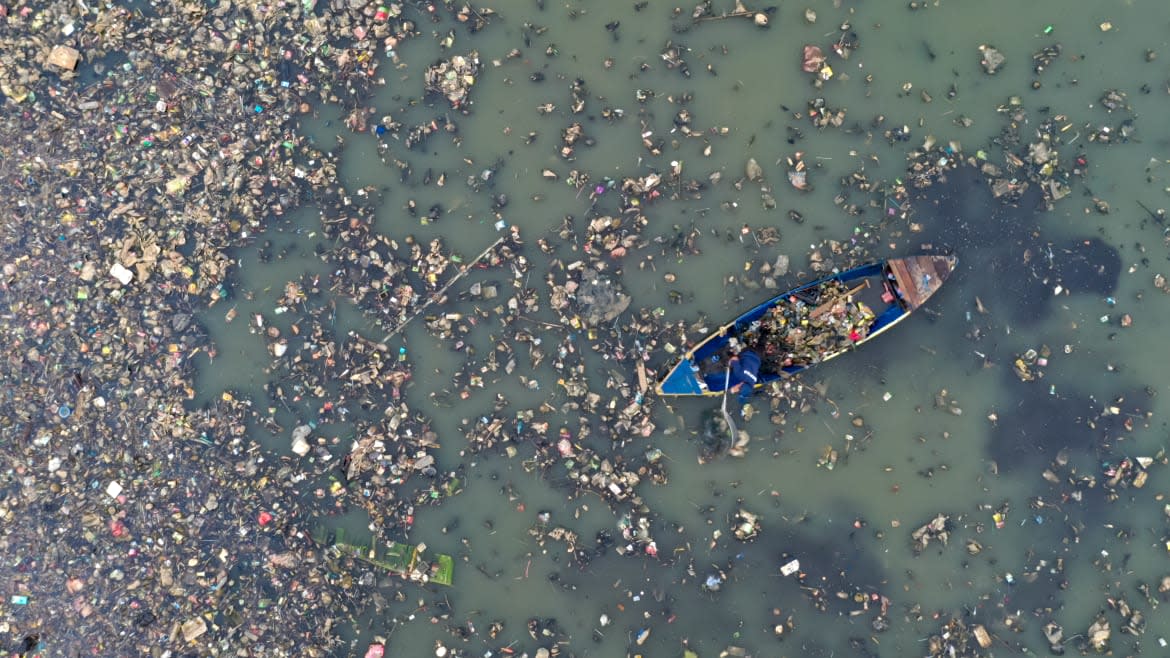Floating Garbage Is a Breeding Ground for Dangerous Bacteria

Most consumers don’t think about what happens to their garments and products after they’ve disposed of them. But a surprising amount of our waste ends up in the ocean—millions of tons of plastic each year, by some estimates. And out of all the types of tiny plastics polluting bodies of water around the world, microfibers play the largest role.
Synthetic clothing sheds microfibers everytime it is washed, and these particles make their way into waterways, where they’ve been found to leach toxic chemicals into the water and harm small organisms that ingest them. Now, a team of researchers from France have looked at how natural and synthetic microfibers impact bacteria, the lowest rung of the food chain. Their findings, published on Wednesday in the journal PLoS ONE, aren’t pretty: Bacteria that don’t normally exist at such high levels in the ocean are flourishing on microfibers, including one nasty group that can cause diseases in animals and humans.
The researchers sampled seven sites in the Mediterranean Sea during an expedition that occurred in 2014, filling buckets with unpolluted seawater and samples awash with microfibers. Their hunch was that the synthetic, cotton, and wool fibers would support very different communities of microorganisms than the open ocean in both spring and summer, since microfibers provide a distinct food source and anchoring spot for bacteria.
Can a Future Fleet of Robotic Fish Clean Up the Ocean?
They scanned samples of the fibers with electron microscopes to estimate the number of bacterial communities present in their samples, then sequenced the DNA of these microbes to get a better sense of what exactly was growing there.
The most abundant bacteria living in the unpolluted samples was Candidatus Pelagibacter, a microbial plankton. But the microfibers hosted very different microbes, including a species of Alteromonas, which is a group that can attack and kill nearby microalgae. Most concerning to the researchers was the high prevalence of species from the genus Vibrio in the microfiber samples—a group whose members can cause gastrointestinal diseases, including cholera.
Vibrio parahaemolyticus, which can potentially infect humans through raw or undercooked seafood, made up 7 percent of all the bacteria in the microfiber samples. The species was present in 71 percent of these samples.
This Startup May Know to How to Unlock Sustainable Clothing
“Although our results are not exclusively related to synthetic fibers, they do reinforce the role of plastics, including synthetic microfibers, in harboring potentially harmful organisms,” the researchers wrote in the study.
It’s not known whether these species, once present on microfibers, can jump ship to other aquatic ecosystems, or the extent of their distribution worldwide. The researchers noted, too, that over time, there may be a possibility that the overgrowth of dangerous bacteria on microfibers forms biofilms, which could increase the risk of the pathogens’ transmission to marine life.
Considering the ways that your purchasing decisions are harming the environment may be hard to stomach—but so would a literal stomach bug caused by the bacteria that have taken up residence in your old sweater.
Got a tip? Send it to The Daily Beast here
Get the Daily Beast's biggest scoops and scandals delivered right to your inbox. Sign up now.
Stay informed and gain unlimited access to the Daily Beast's unmatched reporting. Subscribe now.

